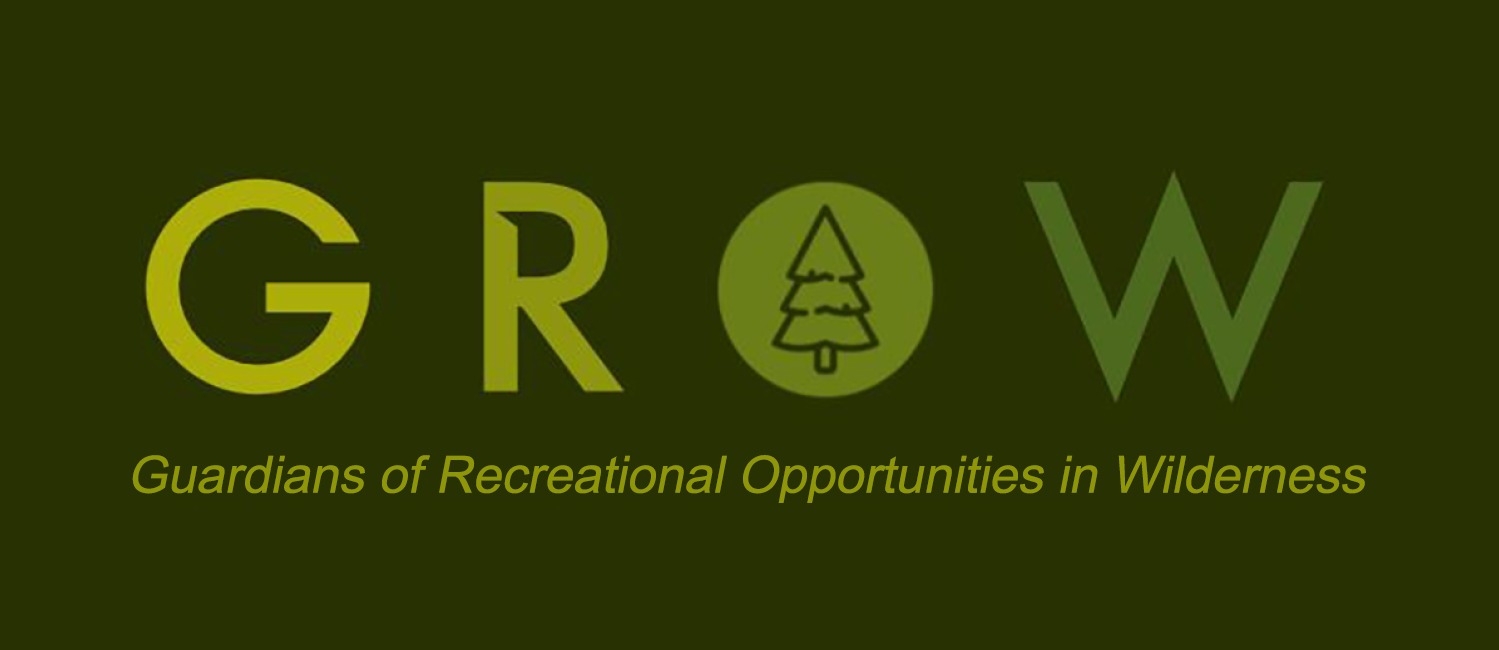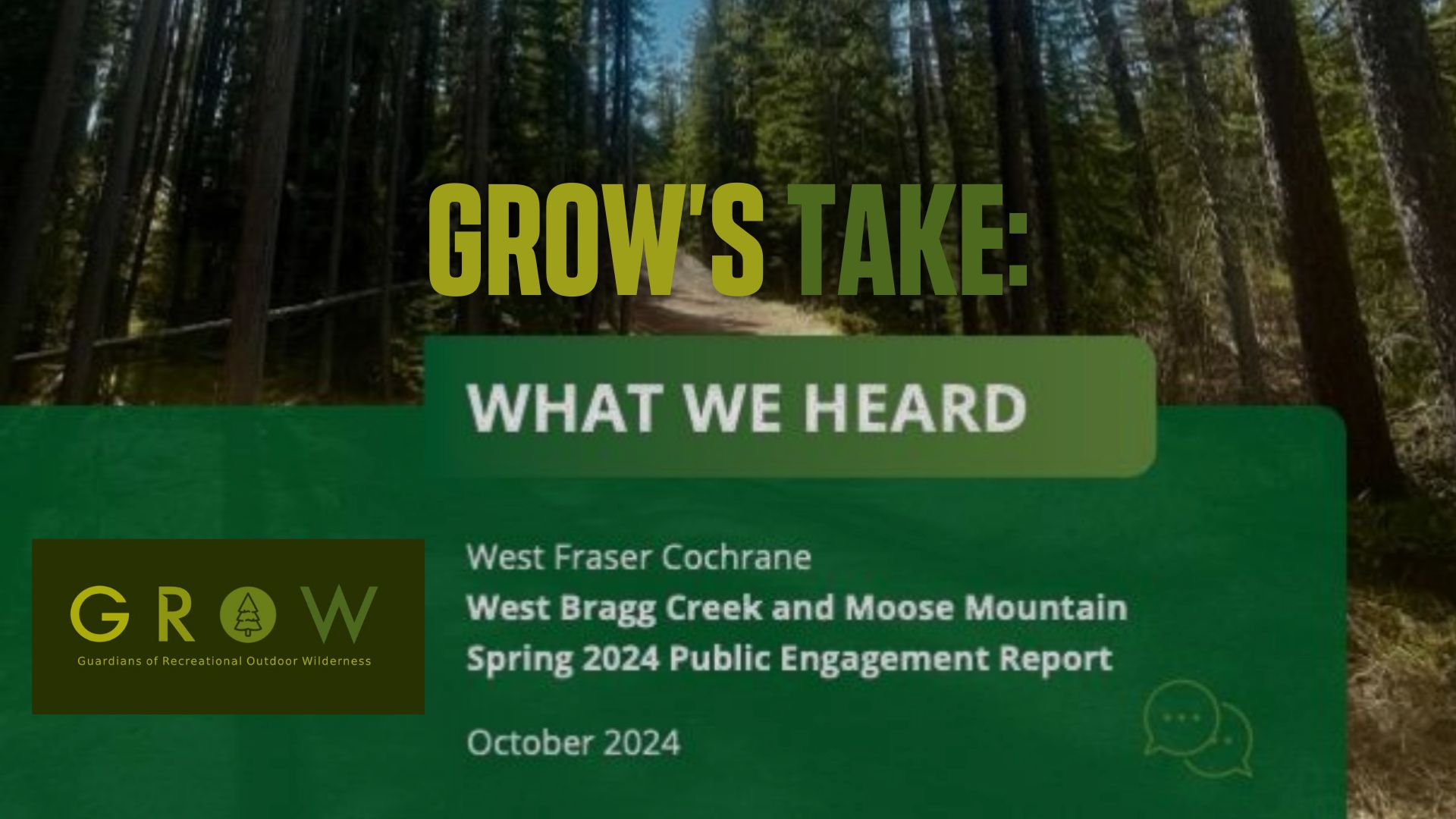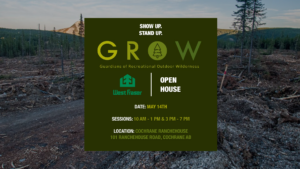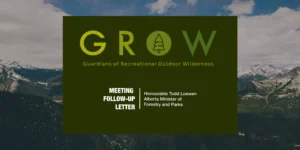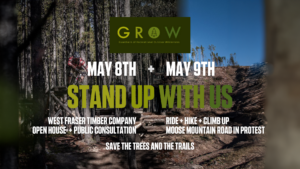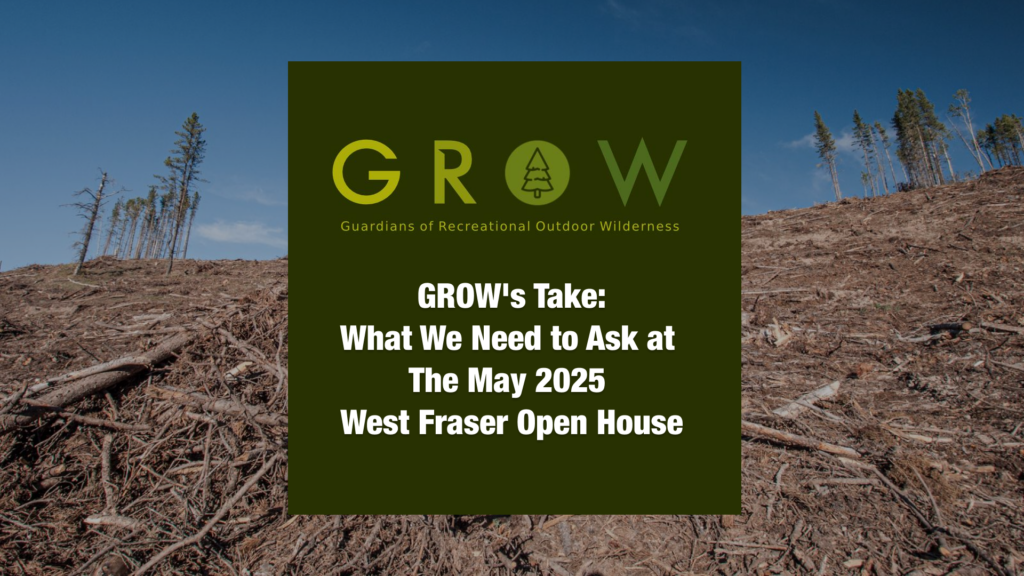Is this thing on?
To kick this off, we’d like to apologize for the radio silence.
We wanted to provide ongoing updates about GROW and our advocacy for the proposed harvest of Moose Mountain and West Bragg Creek over the summer and fall months…
But as many of you know, logging consultations are a lengthy process.
We met with West Fraser Timber Company several times.
We created action items for them on what we wanted to see happen.
After a ruthless amount of follow-up emails, texting, meetings and more…
We got to see a preview of West Fraser Cochrane’s Response to the logging open house back in May in late October.
Here we are, two weeks into November, and we have something to present.
West Fraser Timber Company has released their “What We Heard” document to the public and we’ve had a chance to formulate our hot take on what is going on and where we ate going from here.
GROW's Summary of West Fraser's Response:
West Fraser Timber Company (WFTC) directly manages approximately 8.2 million hectares of public forestland in Western Canada. The proposed harvest, presented at the open house, was 738 hectares.
West Fraser Timber Company received approximately 350 written submissions and had approximately 700 people attend Open Houses on May 8 and 9. Thank you again for showing up!
West Bragg Creek and Moose Mountain’s final harvest plan is still scheduled for Spring 2026, with the harvest commencing in October 2026 and continuing through early 2027.
As a result of the feedback that you provided, along with several other organizations (including Bragg Creek Trails Association and Moose Mountain Bike Trail Society), West Fraser Timber Company has made the following key alterations:
- Reduced the total harvest size from 738ha to 556ha (268ha in West Bragg Creek and 288ha in Moose Mountain area).
- Reduced the amount of trail located within cut blocks to 1% and within 50m of cut blocks to 17%
- A small portion of the proposed clearcuts will be harvested using selective harvesting procedures rather than only clear-cutting.
- Tree buffers of various widths are being utilized where appropriate to separate trails from clear-cuts
- WFTC is asking the government for alternative, unallocated harvest areas to make up for lost volume

West Fraser's "What We Heard" Document:
If you’d like to see West Fraser Cochrane’s response to the May Open House about the proposed harvest of West Bragg Creek and Moose Mountain, please click on the button below:
GROW's Reflection on West Fraser's Response:
First, we would like to THANK YOU for the support!
Hundreds of citizens dropped everything and drove to Cochrane for the open house and Moose Mountain Protest, and nearly 20,000 individuals have signed the petition.
We are absolutely humbled and truly thankful to be a part of such a supportive community.
Had you not protested, this harvest would have moved forward without any mitigation or consideration of the devastating effect it would have had on West Bragg and Moose Mountain Recreation Areas.
Keep up the pressure!
The mitigation that West Fraser Timber Company has proposed is significant and there appears to be a sincere desire to make their public relations better than they were under Spray Lake Sawmills (SLS). We want to acknowledge that and thank them for improving the process.
Despite significant improvements, GROW still has considerable concerns:
- There is no long-term protection for the area.
- This plan does not address Wildfire concerns.
- It doesn’t go far enough.
- Our trails and outdoor experience are still at risk.
The Effect of Current and Future Harvests on Outdoor Recreation
This Recreation area continues to be threatened by repeated harvesting, and its future remains uncertain.
We have been advised through conversations with WFTC that the harvest area removed from the initial sequence will be permanently removed from any future logging plans.
We asked for this to be stated in writing as similar promises were made and broken in the past. However, WFTC declined.
There are no assurances that the remaining mature forest won’t be sequenced to be harvested in the upcoming years.
The government continues to promise this area for both recreation and clearcut logging, even after introducing a Conservation Fee (in the form of the Kananaskis Conservation Pass) that promised to preserve and protect this area for generations to come.
So far, it looks like they aren’t conserving the area the way it was promised to the public…
Wildfire Threat to The Community of Bragg Creek
Wildfire is a real threat to the Bragg Creek community.
The planned harvest is a standard logging plan that will NOT mitigate wildfire risks.
All the fine fuels that typically burn in a forest fire will be left scattered across the clearcut. Only the large cordwood (trunk), which typically doesn’t burn in a forest fire, will be removed.
The clear-cut areas will open the forest canopy, resulting in a drier, windier, more fire-prone landscape. Compounding this concern, this harvest will use techniques to ensure a thick regrowth of highly flammable coniferous trees.
They will also use glyphosate spray or scarification to stop the regrowth of broad-leaf fire-resistant vegetation (Aspen, etc.).
The result will likely be an increased fire hazard for future generations.
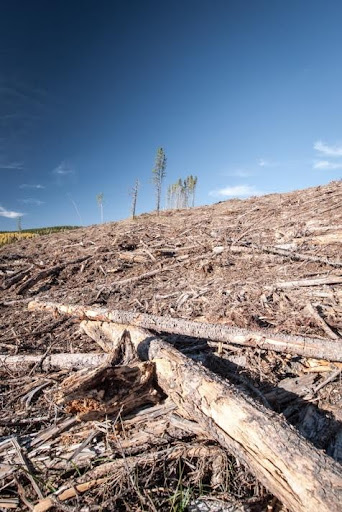
Unlike in 2012, fire experts were not consulted for the current harvest plan...
2023 was the worst fire year in Alberta’s history. More forest burned that year than ever before. According to the 2023 ABMI report, the younger (recently harvested) forests burned at a significantly greater rate than the old mature forests.

*Effects of 2023 Wildfires in Alberta: Huggard, D., B. Allen & D.R. Roberts, ABMI
While the Jasper fire was absolutely devastating (33,048ha – 800 homes destroyed), the focus on the lack of logging as being the main cause is not justified.
There have been far larger and more destructive fires that burned through managed forests:
- 2011 - Ft. McMurray - 579,767ha burned, 2,400 homes destroyed, another 18,745ha burned again in 2024
- 2011 - The Slave Lake Fire also ran through significantly clearcut forests before ravaging the community
- 1950 - The Chinchaga River Fire - Started in a logging slash and burned 1.4 million hectares (largest in North America)
Simply logging using standard harvesting procedures will not protect the community of Bragg Creek and could, in fact, increase the fire hazard over the long term.
We need a proper wildfire assessment conducted by an independent expert with community involvement (Citizen groups, Bragg Creek FireSmart committee, Redwood Meadows Emergency Services).
We need the results of that assessment to be integrated into a proper FireSmart Harvest plan similar to 2012-2014.
Enviromental and Aesthetic Concerns
Since the early 1900s, Kananaskis has been recognized as a key watershed area.
This fragile mountain ecosystem holds very thin topsoil and extreme mountain weather.
Unlike other areas, regrowth within Kananaskis takes roughly 100 years for the forest to be mature enough to harvest again.
In fact, the sawmill has yet to harvest replanted trees within this region. Despite the unique nature of this area, the logging practices used within Kananaskis will be the same as the high-growth boreal forests located elsewhere in the province.
In the past, Alberta required a “green-up” period, which prohibited harvesting adjacent to previous cut blocks for 20 years. Changes in forestry management have allowed this harvest to take place adjacent to the 2012-2014 cut blocks.
In other high-profile areas, harvest companies increased stand retention (trees left standing inside cut blocks) to 10% of the clearcut. We were advised that stand retention will remain at 3% within this harvest area.
The vast majority of this harvest will be clear-cut to ensure maximum regrowth of coniferous trees. In an area where thick regrowth of highly flammable coniferous trees is not desirable, and where recreation plays such a vital role to the local and provincial economy, selective logging should be conducted throughout the entire proposed harvest.
GOALS: Where We're Going From Here
Now that we’ve established what’s going on and the nitty-gritty of WFTC’s “What We Heard” document, here is where we are going from here and how we’re actioning our next moves:
Consulting MLAs
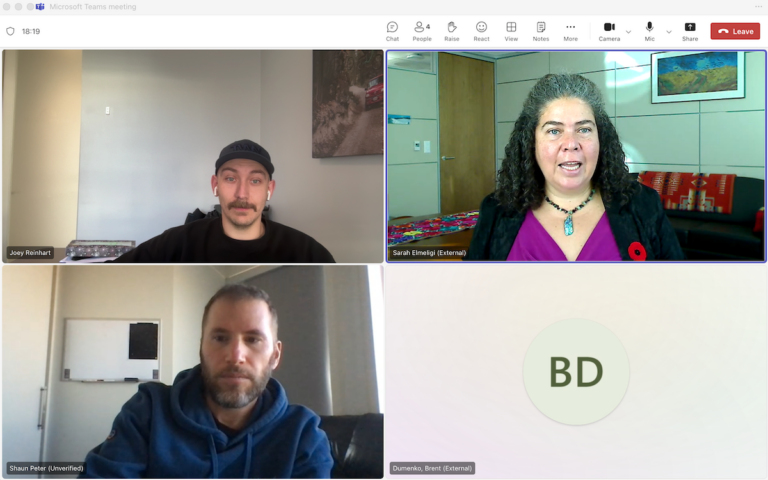
We met with the Banff/Kananaskis MLA, Sarah Elmeligi, to get her thoughts on the situation, the response, and to prep us for what is to come in the process.
Meeting With Ministers
We have a meeting with Todd Loewen, the Alberta Forestry Minister scheduled for November 26th.
GROW is preparing a presentation for Todd to help him understand the impact and the nuances of this situation as well as the impacts it will have for him and his fellow ministers in the months to come.
We’ll share the presentation with all of you after we’ve had the meeting and communicate the outcome of that meeting.
GROW's Goal:
Our goal, after working collaboratively with West Fraser, is to find an amicable solution for all parties:
- We can’t expect them to just get up, go away, and stop logging. There’s too much economic impact for it to be possible.
- We can work with WFTC, the ministers, and powers that be to find WFTC reciprocal volume somewhere else.
If we are able to pull this off, we can have our beloved trails removed from West Fraser’s FMA (logging rights) and leave them in an economically viable position.
This means, we reach our end goal. Our trails aren’t affected, the trees stay, and we retain the outdoor experience we all know and love.
West Fraser will have a new area they can harvest without a dedicated user group to keep their Cochrane operations alive and well.
A recreation area “protected” and funded by Kananaskis Conservation Pass, paid for by your hard-earned money, can be unscathed by the proposed harvest. We’ll all be able to ride, hike, and enjoy the trails, views, and authentic outdoor experience we’ve come to love.
In Closing
While we are encouraged to see some changes to the initial plan, we feel that they don’t address the significant concerns we have about future harvests, outdoor recreation, wildfire threats, and environmental/aesthetic issues.
There is one very positive point that we’d like to highlight. West Fraser is actively seeking alternative, unallocated harvest areas in exchange for harvesting this area.
We feel that the West Bragg and Moose Mountain recreation areas are far more valuable with the trees left standing and this area should be preserved and protected as the Kananaskis Pass promised to provide.
We are joining WFT in requesting that the government find alternative, unallocated harvest areas that can be used in exchange for permanently removing this area from WFT’s Forest Management Agreement.
We will continue to engage with various authorities and ensure that your voices are heard.
In the meantime, please share this far and wide and continue to get your friends to sign our petition.
We’re going to need all of the support we can get.
On behalf of the GROW Kananaskis Team, we’d like to thank you for your ongoing support.
We couldn’t have gotten this far without you!
Sincerely,
GROW Kananaskis
